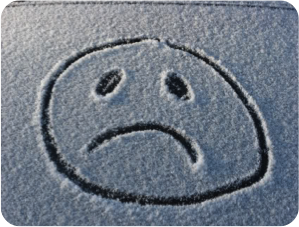What is seasonal affective disorder? Seasonal Affective Disorder (SAD) is, according to the Mayo Clinic, “a type of depression that’s related to change in seasons—SAD begins and ends at about the same time each year.” SAD can appear with different symptoms in summer but has been traditionally prominent in colder, darker months. Now that winter is here, it’s important to examine how, if at all, SAD could be affecting your performance academically or socially.
What are the symptoms? In the winter months SAD can typically cause depressed or hopeless feelings, low energy, problems sleeping, changes in weight or appetite, difficulty concentrating, feeling sluggish or agitated, or frequent thoughts of death or suicide.
Is SAD a real disorder? Yes. Although it might be easy to brush this off as the “winter blues,” SAD can affect people in very real ways.
How can I manage SAD? Getting outside, eating right, relaxation techniques, and visiting friends are a few lifestyle changes that help to manage the effects of seasonal affective disorder.
What else can I do? Light therapy is one of the most effective ways to treat seasonal affective disorder. The University of Michigan’s Counseling and Psychological Services (CAPS) provides free light therapy five days a week at the Wellness Zone. The Wellness Zone is open during CAPS hours, 8 a.m.-7 p.m. Mondays through Thursdays, and until 5 p.m. Fridays.
Think you might have SAD? Before determining a diagnosis of SAD, it’s typically required that a psychiatrist is able to rule out a variety of other factors. An accurate diagnosis is important in recommending the correct treatment. If you feel as though you may be experiencing seasonal affective disorder, talk to a professional first.
Who can I talk to about SAD? The University of Michigan offers free counseling through the office of Counseling and Psychological Services (CAPS). You can find more information about CAPS and SAD here.
Contributed by Carson Smith

